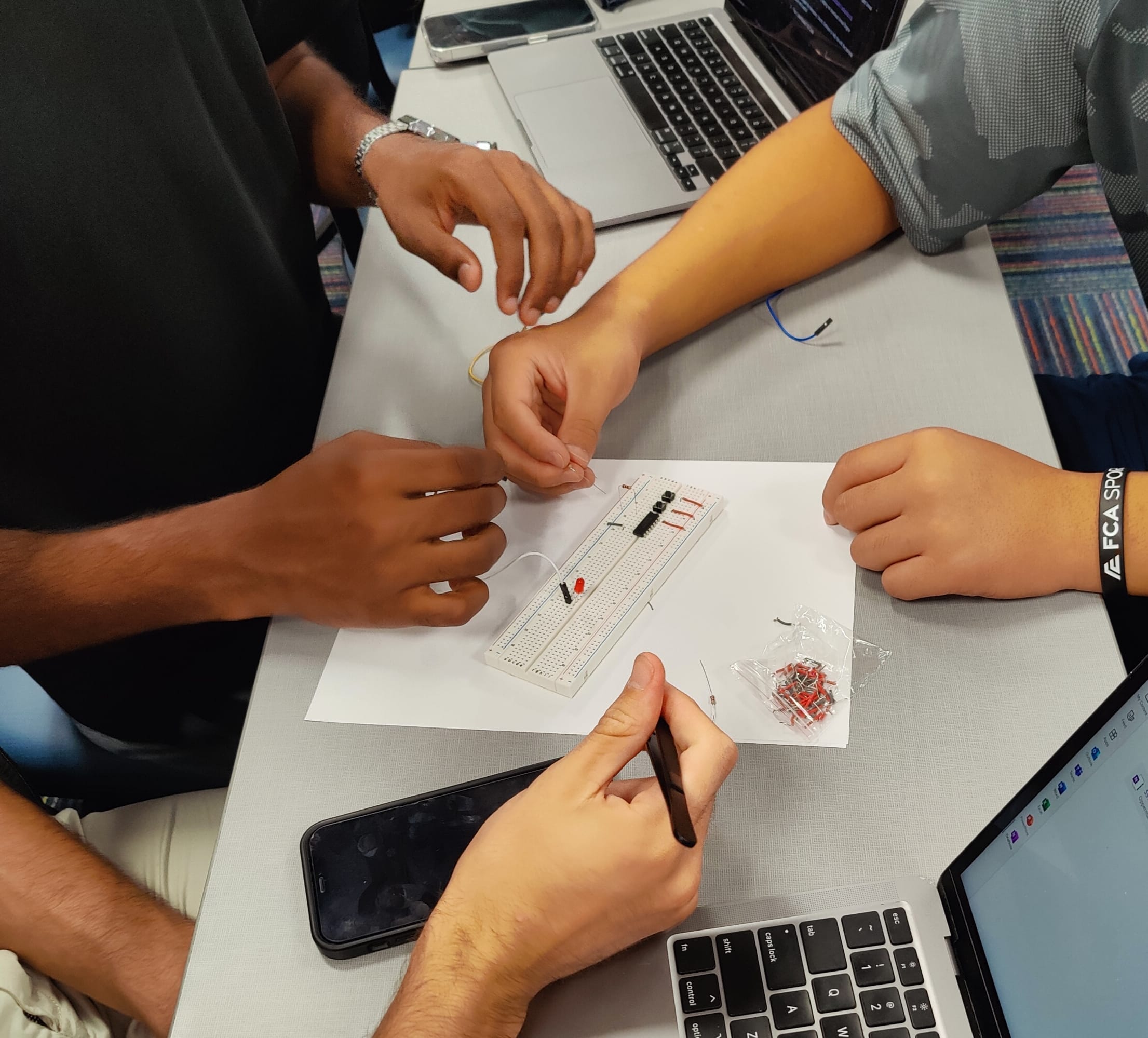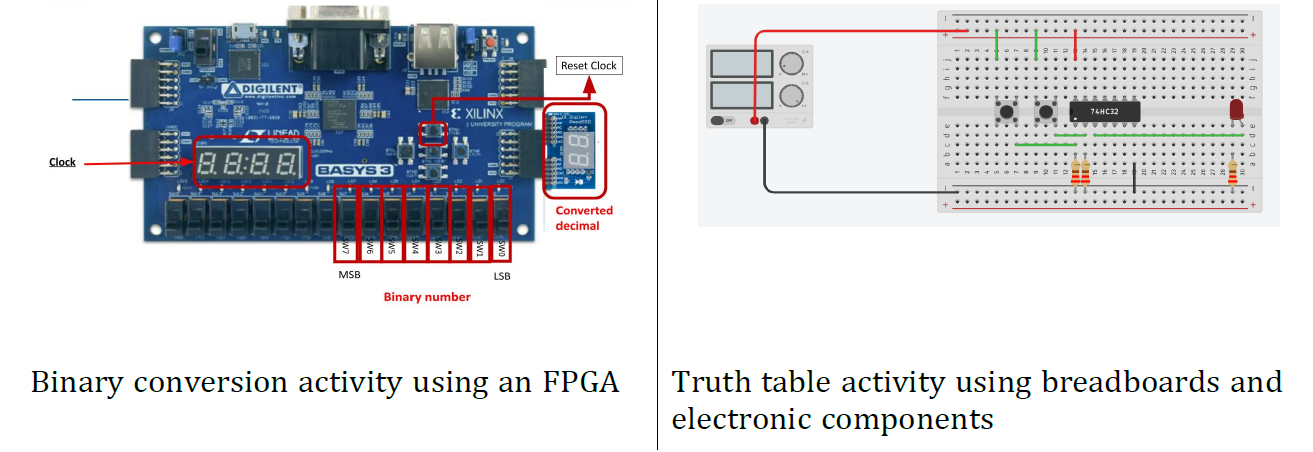Cultivating hardware engineering interest in high school students using hands-on learning
Project Members: 1Andrea Ramirez-Salgado, 2Tanvir Hossain, 2Tamzidul Hoque, 1PhD.,Swarup Bhunia, PhD., Mary Jo Koroly, PhD., Bradford Davey, 1Pavlo “Pasha” Antonenko, PhD. 1University of Florida, 2University of Kansas
Background
- A matter of national security for the US is supporting the development of the semiconductor and microchip workforce to address the chip shortage and its negative consequences.
- Higher education institutions are establishing programs to train the necessary workforce and address the CHIPS and Science Act passed by US legislature in 2022.
- High school students interested in computer engineering often fail to consider the hardware aspects of the field and opt for degrees centered around software.
- We have undertaken a project funded by the NSF IUSE program to explore the usability and feasibility of hands-on hardware activities for high-school and first-year undergraduate students across various engineering disciplines.
- We aim to cultivate situational and individual interest in computer hardware to ultimately contribute to the development of the highly needed computer hardware workforce in the US.
Theoretical Framework
- Our theroretical framework is grounded on the interest development theory proposed by Hidi and Renninger (2006).
- Research questions: (1) How do hands-on activities impact high school students’ situational interest in computer hardware engineering in a 6-week summer seminar? and (2) How do hands-on activities impact high school students’ individual interest in computer hardware engineering in a 6-week summer seminar?

Context
- We are developing a series of activities for an undergraduate course tailored for incoming freshmen within the College of Engineering at UF. For this study, we scaffolded the activities to cater to high school students who participated in a 6-week honors seminar in a summer residential program at UF.
- Ten students participated in the seminar, of whom six, including two self-identified girls and four boys, provided informed consent.


Instructional Module
- To provide students with hands-on learning experiences in hard-
ware engineering, our seminar incorporated the use of FPGAs, circuits and simulations -
The activities, desgned under UDL, CSP, and experiential learning principles, aimed to cover various science and math topics, including binary arithmetic, Boolean logic, combinational circuits, sequential circuits in the form of finite state machines, and memory read-and-write processes.

Data Sources
-
Participants were engaged in a semi-structured focus group at
the end of the seminar. -
The focus group protocol was designed to explore students’ per-
ceptions of the activities and whether they triggered situational interest in hardware computing or provided meaningful engagement toward the topic. -
We adapted Romine et al.’s (2014) instrument to measure Stu-
dent Interest in Technology and Science (SITS). -
The SITS instrument assesses individual interest in science and
technology, specifically to understand students’ ideas about learning, careers in science and technology, and computer engi-
neering.
Results
- Students exhibited characteristics of transitioning from triggered situational interest to a more sustained state of situational interest.
- Survey results indicated that the six-week seminar increased participants’ overall individual interest.
- The findings of this study indicate that highly immersive hands-on experiences contribute to improved interest in computer hardware engineering (Ackovska & Ristov, 2013).
Reference
Ackovska, N., & Ristov, S. (2013). Hands-on improvements for efficient teaching computer science students about hardware. 295–302.
Hidi, S., & Renninger, K. A. (2006). The four-phase model of interest development. Educational Psychologist, 41(2), 111–127.
Romine, W., Sadler, T. D., Presley, M., & Klosterman, M. L. (2014). Student interest in technology and science (SITS) survey: Development, validation, and use of a new instrument. International Journal of Science and Mathematics Education, 12(2),261–283. https://doi.org/10.1007/s10763-013-9410-3
